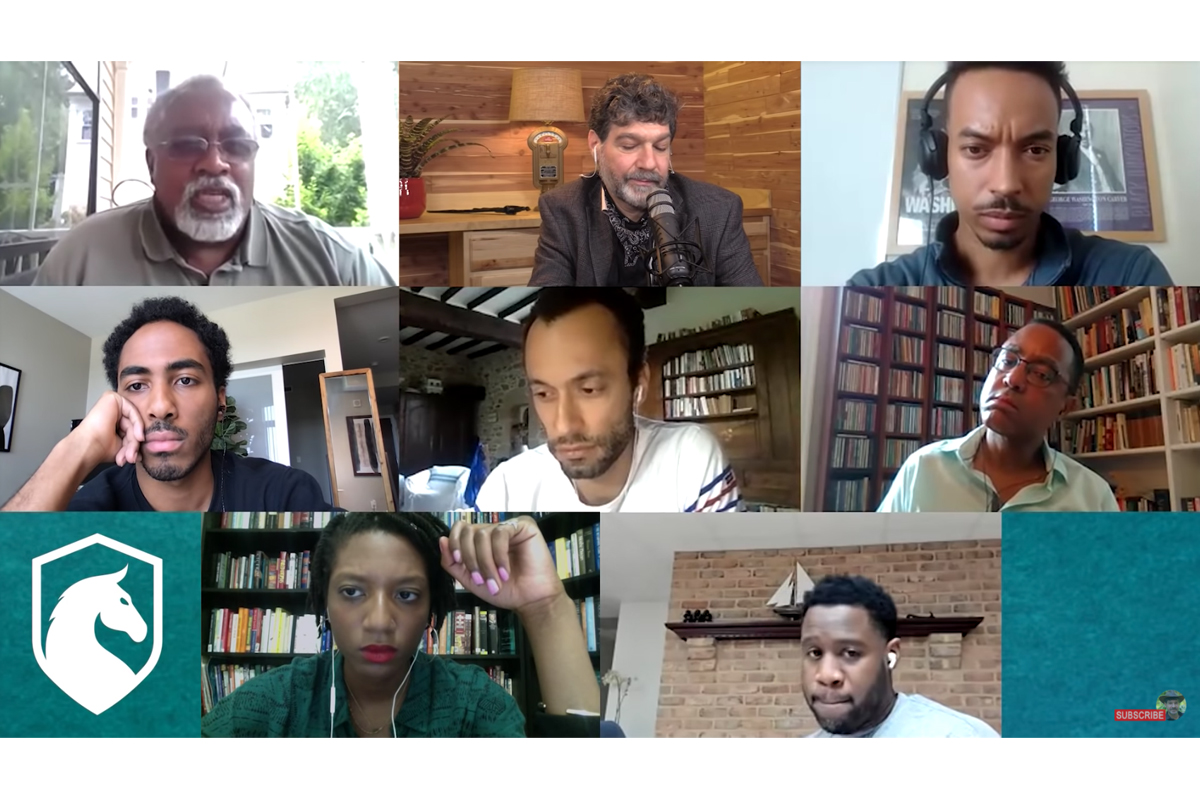In the winter of 2018, Politico magazine ran a ‘Culture Wars’ issue, providing its delicate, cosmopolitan readership with a glimpse of the intellectual stirrings in the provinces of the empire. One of the articles, ‘The Voice of the “Intellectual Dark Web”’, profiled Australian journalist and founding editor of Quillette, Claire Lehmann.
At the time, the ‘Intellectual Dark Web’ represented a kind of vanguardism, or at least prestigious media coverage portrayed it as such. For example, Bari Weiss, then a writer for the New York Times, romanticized the concept in a story for the paper. ‘What is the IDW and who is a member of it? It’s hard to explain, which is both its beauty and its danger.’ According to Weiss, venture capitalist Eric Weinstein half-jokingly coined the term to refer to a cohort of dissident, largely ‘classical liberal’ personalities who resent the mainstream’s stifling intellectual culture and hard-left turn. It includes figures from Lehmann to the Daily Wire’s editor emeritus Ben Shapiro. These people value free speech, observe biological realities and eschew ‘identity politics’.
The irony of the IDW’s dissidence, however, is that it was concretized, popularized and in some cases given official stamps of approval by not-so-dissident publications such as the New York Times and Politico. That may have been an early indication that the incumbent cultural regime viewed the IDW as ultimately harmless. Lehmann’s recent attack on author and cultural critic James Lindsay points to that conclusion.
Though he goes unnamed in Politico’s 2018 profile of Lehmann, Lindsay is alluded to as a friend of hers involved in the Sokalian ’grievance studies’ affair. That was a very IDW story. Lindsay and two others successfully published absurd, bogus papers in academic journals to highlight the sad state of academia by filling them with social-justice nonsense. ‘One of the papers included a lengthy passage from Adolf Hitler’s Mein Kampf, rewritten to focus on feminism and intersectionality,’ Politico noted. That was Lindsay’s handiwork.
Academic trolling aside, Lindsay is a run-of-the-mill rationalist and more or less milquetoast. He has a penchant for pedantic and obscurantist word salad and a habit of picking fights to his right — especially with Christians. He’s an angry atheist. But he has also seen the light on some cultural issues, which is why Lehmann went dark on him.
’James Lindsay is now peddling White Genocide Theory,’ she tweeted in a panic on June 9. ’Implying that a genocide against whites in the US is imminent has the potential to inspire racist violence.’ Lehmann pointed to a tweet by Lindsay in which he expressed concern for the physical safety of white Americans amid the current culture of mainstream anti-white racism. The most prominent manifestation is ‘critical race theory’, which is just a euphemism for systematized anti-white racism. ‘Such comments are extreme, reckless & irresponsible. They should be denounced,’ said Lehmann.
The fact that the matriarch of the IDW would attempt to stifle speech with which she disagrees seems conspicuously at odds with the movement’s core mission. Moreover, far from being reckless and irresponsible, Lindsay is right about anti-white racism.
The New York Times published ‘Trump’s Last Stand for White America’ last October, framing the 2020 election as the agonal gasps of that vile demographic. ‘Donald Trump has been all about the fear of replacement, or as it’s sometimes called, “the great replacement”,’ wrote Roger Cohen. ‘His has been the stand — I am tempted to say the last stand — of whites against nonwhites.’ Cohen, contra Lehmann, not only insists that whites Americans are being marginalized but that their marginalization is, of course, a good thing.
In a lecture this year entitled ‘Psychopathic Problem of the White Mind’, psychiatrist Aruna Khilanani discussed at the Yale School of Medicine her ‘fantasies’ of killing white people. Khilanani told the audience she ‘had fantasies of unloading a revolver into the head of any White person that got in my way, burying their body and wiping my bloody hands as I walked away relatively guiltless with a bounce in my step’. You know, normal stuff.
The Journal of the American Psychoanalytic Association recently published an article likening being white to a disease. ‘Whiteness is a condition one first acquires and then one has — a malignant, parasitic-like condition to which “white” people have a particular susceptibility,’ reads the abstract. The author, Dr Donald Moss, is an instructor at the New York Psychoanalytic Institute and at the San Francisco Center for Psychoanalysis. Moss claims this disease is incurable, that it ‘renders its hosts’ appetites voracious, insatiable, and perverse’, and poses a grave threat to nonwhite peoples. If you take the doctor’s diagnosis to heart, what might you conclude is the cure?
Nevertheless, it is Lindsay, Lehmann insists, who is enabling possible ‘maniacs’, ‘extremists’ and ‘people who have become insane via over-exposure to the internet’. Moreover, she says, his comments may help them feel further ‘inspired, emboldened, & validated to commit terrorist violence’.
On the contrary, Lindsay is merely observing that institutional anti-white racism rationalizes violence and propels the worst habits of a ruling class that feeds on racial animus for ideological and cynical reasons. And Lehmann shouts it down.
Either she has been living under a rock, or Lehmann finds Lindsay’s fears more disturbing than the vilification of white people that fans the flames of racial violence. In either case, the point about the IDW being sanctioned opposition due to its harmlessness is proven true.
Some of the thinkers associated with the Intellectual Dark Web have done good for the lives of others over the years. Jordan Peterson, the psychologist and best-selling author, introduced many young people to new ways of thinking and defended order and hierarchy when those things have fallen out of fashion. Even Lehmann has had her moments.
But the ‘movement’, such as it exists, largely exists because of its inherent limitations and tendency to eschew the enemies of the established order at critical moments, on crucial points. It is a harbinger of ‘dangerous ideas’ that manages at the same time to be utterly unthreatening.

























